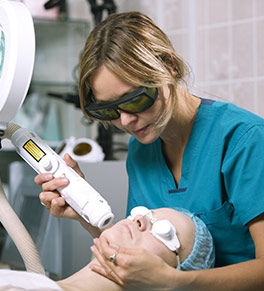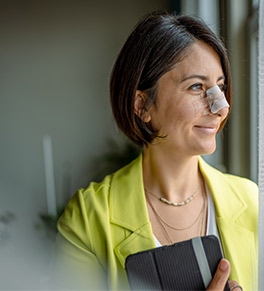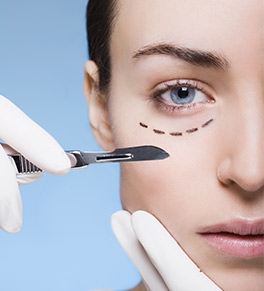
With today’s advanced technology and state-of-the-art nonsurgical procedures, you have quite a selection of cosmetic treatments to choose from to help reverse the outward signs of aging, like facial lines and sagging skin. Here at the Yeung Institute in Houston, Dr. Cecil Yeung, a highly skilled facial plastic surgeon, offers men and women his expertise in the latest nonsurgical cosmetic procedures, including fat transfers and Botox® injections.
So, how do you know whether a facial fat transfer or Botox is best for you? Dr. Yeung discusses some common facial skin concerns that fat transfers and Botox correct, so you can decide which procedure is best.
What would you like to improve: Wrinkles or sagging skin?
Consulting with a skilled plastic surgeon before undergoing any cosmetic procedure is a good idea, so you can receive a personalized assessment of your concerns and a professional recommendation as to which procedures can best improve them. However, before consulting with Dr. Yeung and his experienced team, take a close look in the mirror to determine the features you’d like to improve upon.
Do you have frown lines between your eyebrows that you’d like to erase? What about crow’s feet around your eyes? Or, do your jawline, forehead, or eyes appear droopy and sagging?
If fine lines and wrinkles are aging your appearance, then Botox injections may be a good choice. However, if sagging areas of skin are your biggest complaint, or more severe lines and creases are making you look old, then fat transfers could be the ideal solution. It also helps to understand the difference between the treatments so you can make an informed decision based on Dr. Yeung’s recommendations.
Botox temporarily paralyzes your muscles
Botox injections are different than dermal fillers or fat transfers in that they actually prevent your muscles from forming lines and creases on the surface of your skin. A Botox injection temporarily paralyzes the muscles from contracting when you frown, raise your eyebrows, or squint, and therefore it helps smooth out the appearance of fine lines. You can still make expressions as usual, and the results typically last up to four months.
Botox injections work well to reduce the appearance of crow’s feet in the corners of your eyes, the frown lines between your eyebrows, and lines across your forehead. The procedure takes just a few minutes, so typically, you’re in and out of the office in under an hour. You can go back to work or resume your daily activities without much discomfort, though the treated area may be red for a few hours afterward.
You may see results in as little as 24-48 hours, and you may need to schedule additional injections every 3-4 months or so to maintain your desired appearance.
Fat transfers plump up skin and add volume to hollow areas
A fat transfer works more like a dermal filler to plump up areas of sagging skin and address volume loss. The biggest difference between a dermal filler and a fat transfer is that the fat Dr. Yeung injects into your face comes from your own body. Since most people have some extra fat on their buttocks or abdomen they’d prefer to live without, a fat transfer repurposes some of that fat for a better use — to help you look younger!
Fat transfers are all natural, and therefore pose no risk of your body rejecting them since your immune system doesn’t see them as foreign material. Depending on your facial skin concerns, you can receive fat transfers in the areas around your eyes, mouth, or jaw line to add volume for a more youthful appearance.
Fat transfers don’t require any incisions in your face, but the procedure is a bit more involved than a simple Botox injection, since Dr. Yeung has to remove a small amount of fat from another area of your body and process it thoroughly before he injects it into your face. And, you’ll need to take it easy for a couple weeks after the procedure to give the fat time to adjust to its new location.
Typically, though, the results of fat transfers are long-lasting since your fat cells can survive indefinitely, so you may not need to repeat the process every few months as you would with Botox.
There are benefits to both Botox injections and fat transfers, depending on the results you hope to achieve, along with your age, and your lifestyle. Dr. Yeung and the team can help you make the decision that’s best for you. Whether it’s Botox, fat transfers, or another procedure, they’ll have you looking your best in no time.
Call the Houston office or schedule online.









